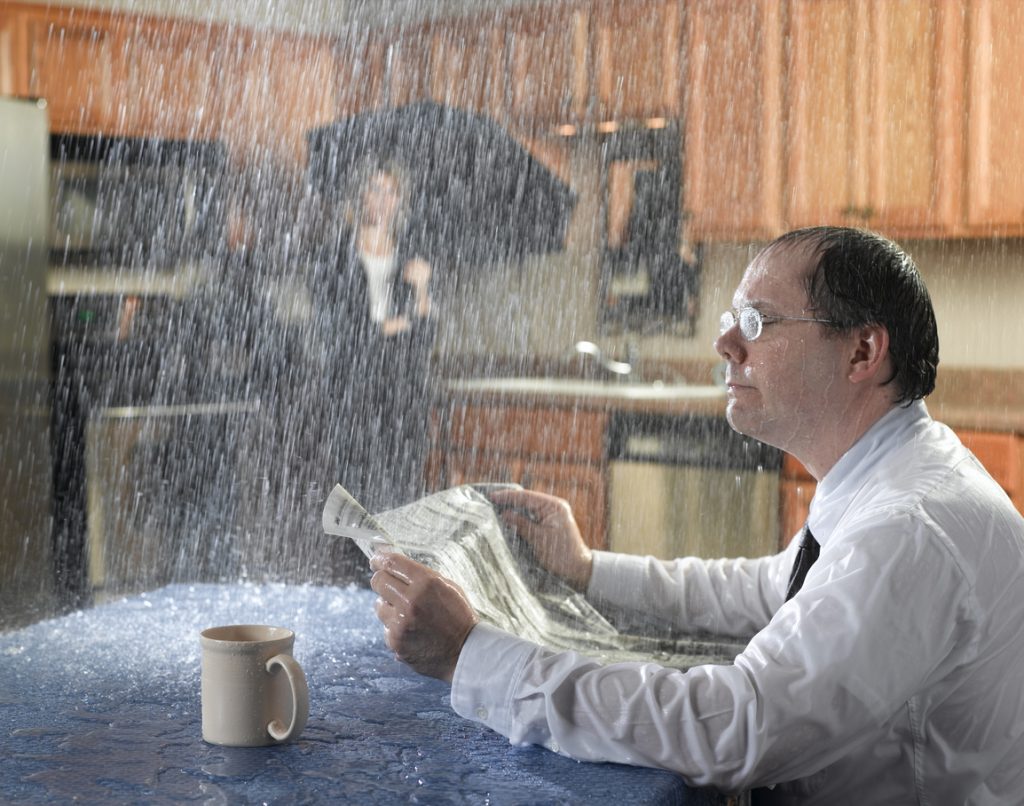Is a condominium association responsible to repair casualty loss damage to the interior of individual condominium units? Generally the answer is no, but why not? After all, some state statutes like the Maryland Condominium Act require that the association repair or replace, “any portion of the condominium damaged or destroyed.” In the case of Anderson v. Council of Unit Owners of Gables on Tuckerman Condo., 948 A. 2d 11 (Md. App. 2008), the court took the opportunity to explain why not.
Anderson was actually a combined case in which two different unit owners and their insurance companies sued condominium associations to repair the interiors of their condominium units. The first unit owner, Ms. Anderson, suffered damage to her unit when her water heater leaked causing damage to walls, ceilings, and floors. The other unit owners, Mr. and Mrs. O’Carroll, suffered damage to their unit from a grease fire in their kitchen. In both instances the damage was limited to the individual units, and in both instances Erie Insurance Exchange insured the units. Both unit owners submitted claims to Erie, who in turn paid the claims less the deductibles. The owners and Erie then sued the association for reimbursement on the theory that the Maryland Condominium Act required the association to be responsible for the damage and to maintain insurance on the common elements and units. The court explained that the reason the associations were not responsible was because of the respective property interests.
A condominium is “an estate in real property” that “typically involves an apartment building or other structure consisting of two or more separate apartments or units,” i.e., “horizontal property” or multi-story “stacked units.” … In Ridgely Condominium Ass’n v. Smyrnioudis, 343 Md. 357, 681 A.2d 494 (1996), we provided an overview of the condominium form of ownership, explicating that an owner has a “hybrid property interest”:
A condominium is a “communal form of estate in property consisting of individually owned units which are supported by collectively held facilities and areas.” …
The term condominium may be defined generally as a system for providing separate ownership of individual units in multiple-unit developments. In addition to the interest acquired in a particular apartment, each unit owner also is a tenant in common in the underlying fee and in the spaces and building parts used in common by all the unit owners.
… A condominium owner, therefore, holds a hybrid property interest consisting of an exclusive ownership of a particular unit or apartment and a tenancy in common with the other co-owners in the common elements.
… The owner, therefore, possesses two distinct, separate property interests. She or he owns a fee interest in her or his individual property, comprising the exclusive right to use and occupy it. … “All a condominium is, is a vertical, rather than horizontal, subdivision of one of the incidents of real property, the airspace…. [T]he condominium statutes did not create a new real property. They simply created another way to own airspace….”
The owner also possesses an undivided percentage interest, as a tenant in common, with the other owners, in the condominium’s common elements, which,
may include the land, foundations, columns, supports, walls, roofs, halls, lobbies, stairs, entrances, recreational areas, parking lots, gardens and installations for utilities. The common interest represents the residual rights that the unit owners have in the property. The unit owners collectively own, as tenants in common, the entire condominium property, minus the airspaces consisting of the units. The rights to individual units are, in a sense, carved out of the tenancy in common.
… Common elements can be further subdivided into limited common elements, which are allocated for the exclusive use of one or more, but fewer than all, owners, such as, for example, designated parking spaces, balconies, terraces or patios, as well as general common elements, such as grounds and roads.
The court reviewed the Maryland statutes and history in light of the unit owners’ argument that the statute only required a unit owner to be responsible for maintenance but not repairs. The court held that such an interpretation would create an illogical result.
The Owners’ interpretation of the statute [] would lead to illogical and absurd results by giving the council owners greater responsibility for losses within a unit than a landlord has on the property of a tenant, when the landlord owns the space, while the council of owners does not. … Additionally, the council of owners would be responsible for repairing or replacing property in a unit within which the council has no right to enter to make inspections or perform preventative maintenance. … As we have noted on many prior occasions, the General Assembly reasonably could not have intended such an illogical result. …
We conclude that the Maryland Condominium Act does not require the council of owners to repair or replace property of an owner in an individual condominium unit after a casualty loss. Thus, we affirm the judgments of the Circuit Court for Montgomery County and the Circuit Court for Prince George’s County.
The court held as many have done around the country, that the association is responsible for maintenance and repairs to the common elements, and that the individual unit owner is responsible for the maintenance and repairs of his or her respective units. It is important to note that this case involved damage that was restricted to the individual units. More complex issues arise when the same property damage bridges across both individual and association ownership interests. The results may also vary depending on local laws, so contact competent counsel regarding these types of issues for your jurisdiction.


